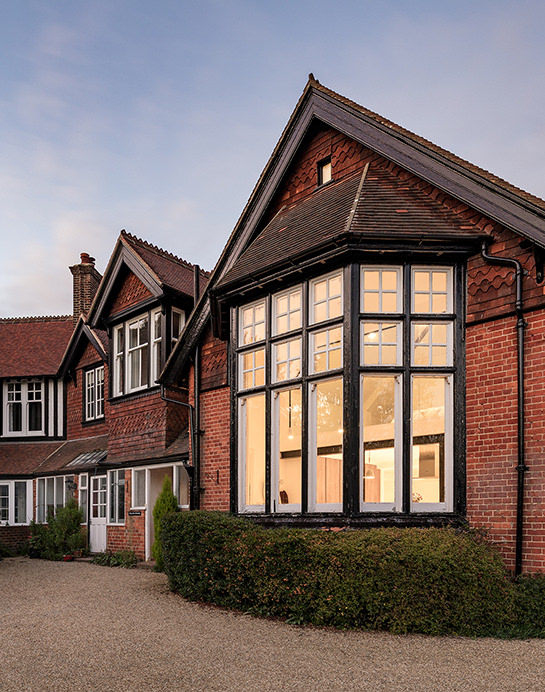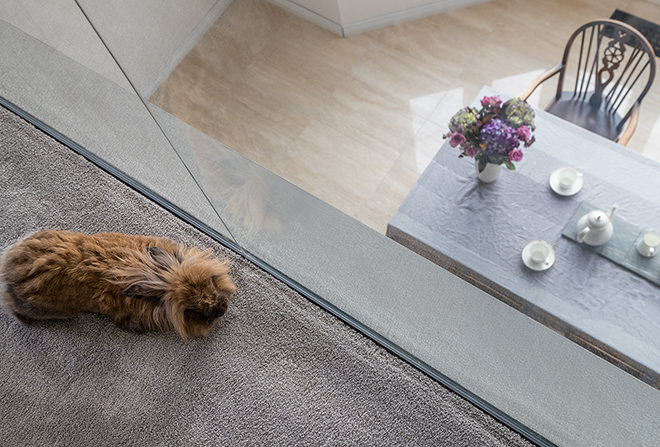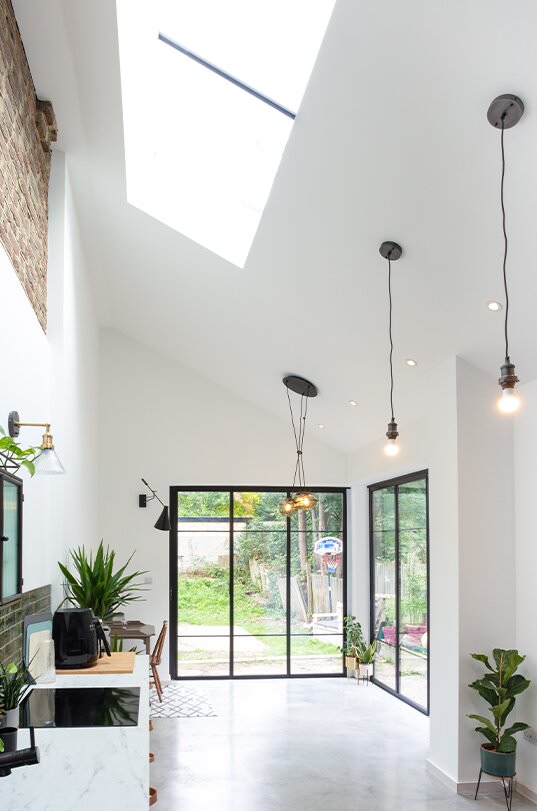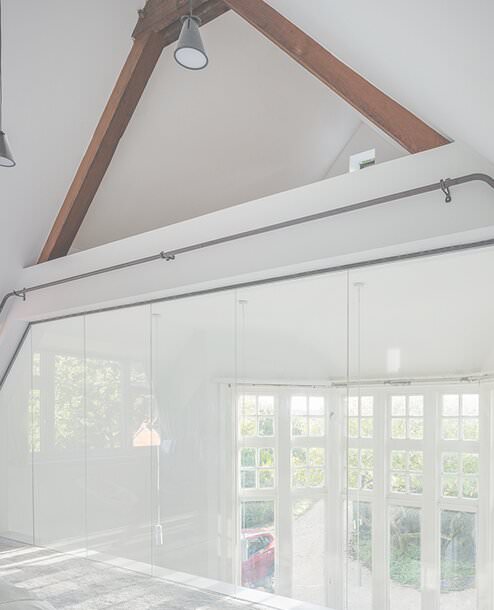Can I build over a sewer?
March 28, 2020
You have been thinking about improving your property by extending it or even found a perfect site to build a new house. As you are dreaming about all the future possibilities you notice a manhole or even manholes right where the foundation of your new structure would go. If pipework is present where you are planning to build, it is highly advisable to get approval from Thames Water.
Without the agreement, there might be issues getting a building regulations completion certificate, which would cause problems trying to sell the property. Also, if the building limits the maintenance and repair works for Thames Water – they have a right to remove the building/extension and charge you for doing so. This can be avoided by following the process setup.
DO YOU ALWAYS NEED A BUILD OVER AGREEMENT?
As a rule, it is a requirement to apply for a Build Over Agreement if the building is:
– Within three metres of a public sewer
– Within one metre of a public lateral drain
Luckily, the process of building over a domestic sewer with a diameter of 160mm or less is not as challenging. It is possible to apply for a self-certified Build Over Agreement online and get immediate confirmation, or officially apply for an approved Build Over Agreement for a set charge.
The costs for Class 1 and Class 2 covers all the processing and issuing agreement steps. On the other hand, Class 3 would require an additional budget for legal fees and surveys undertaken by Thames Water, which can run into additional thousands of pounds.
HOW DO YOU KNOW WHAT SORT OF SEWER YOU HAVE NEAR YOUR PROPERTY?
It is not always obvious knowing what sort of sewer if any, runs through your property. In cities, the pipes are usually located at the back of gardens, and the direction, as well as connections of the pipe, can be determined by opening manholes, if available, in the immediate vicinity. This visually determined information can be added to the drawings in order to proceed further with the design or build process.
There are a number of maps of public sewers available from Thames Water themselves or accessed from the local council if the information is updated. Most Class 1 public sewers are still not recorded in the easily accessible documentation, but the Class 2 and Class 3 pipes, that carry more impact to the infrastructure, will most likely be available and noted in Thames Water searches.
CAN YOU BUILD OVER A PRIVATE DRAIN?
Yes, you can certainly build over a private drain. This also includes building extensions. However, as mentioned previously, you will need to acquire a Build Over Agreement if your build will be within one metre of a public lateral drain.
HOW DO I GET A SELF-CERTIFIED BUILD OVER AGREEMENT?
It is quite possible to get a self-certified Build Over Agreement if the building meets all of the following requirements:
– A single or double-storey construction attached to an existing property.
– No apparent problems with the sewer, such as smells, blockages, or flooding.
– Pipe access points, such as manholes, inspection chambers, or rodding eyes, are a minimum of 500mm
away outside the building.
– The sewer must not change in diameter, direction, material, or gradient beneath or next to the
proposed building.
– The sewer is not more than 2m below ground.
– The sewer is no more than 160mm in diameter.
– The sewer is made out of clay or plastic.
– The building is constructed on top of strip or trench fill foundations.
– The sewer is in good condition.
– No easements or covenants relate to the sewer.
– If building over the full width of the garden the sewer can still be accessed from the neighbours garden.
– The minimum clearances are met as specified in the image above.
HOW DO I GET BUILD-OVER AGREEMENT FOR A CLASS 1 PUBLIC SEWER?
If your proposal does not meet the self-certified Build Over Agreement requirements, applying for one should not be extremely challenging if the following points are addressed through design and construction details:
– All new works are done by a knowledgeable builder/contractor following the latest sewer construction requirements.
– Building Regulations conditions are met in the design and construction.
– The project is an extension to an existing building, rather than new construction.
– No additional loads are put on the existing sewers via the construction of the proposed building.
– The location and depth of the public sewer are verified prior to the start of works.
– Sewers and contact manholes that are up to 1.1 metres deep run a minimum of 150mm away from the building foundations.
– Sewers and contact manholes that are more than 1.1 metres deep, run a minimum of 500mm away from the building foundations.
– Sewers that are more than 2 metres deep, run a minimum of 1000mm away from the building foundations.
– All surveys required are at the expense of the party interested in carrying out building works.
– New connections and manholes to existing sewer infrastructure to be constructed in like for like materials and accessed via a manhole of a pre-formed junction. Saddle connections will not be permitted.
– Connections into manholes to be made with soffit to soffit ‘with the flow’ entrance.
– Ensure that the public sewer is not overbuilt over four or more continuous properties, without an operational manhole being available for access and maintenance.
SITUATIONS WHERE YOU CAN’T BUILD OVER A SEWER
There are certain situations when it will not be allowed to build over a sewer. These are:
– Rising mains are pressurized sewers that pump foul sewage or rainwater. The cost of wither diverting or improving the pumps is very high and would likely be unviable for smaller projects.
– Manholes are not allowed inside the building, due to the increased risk of flooding or smells. It will need to be relocated outside the building to get approval.
– Strategic Thames Water sewers are most significant in the wastewater infrastructure and cannot be built over. The design of the build has to be adjusted accordingly to avoid impact upon these pipes.
– It is unlikely to have a Build Over Agreement granted for a new detached development. Instead, the sewer will need to be diverted at the cost of the person undertaking the works.
– Connecting a new property to a sewer might need approvals and sometimes even works carried out by Thames Water.
– Additional surveys are required in order to build piled foundations and constructed at a minimum of twice the pile diameter or 1.5m (whichever is greater) from the outside of the pile to the outside of the sewer pipe.
– Driven piles are not allowed within 15 metres of the public sewer. Once the type of sewer is established, a lot of the coordination and processes can be relieved by architects, structural engineers, and contractors. Building over Class 1 pipes can generally be overcome via a little bit of forward-thinking and construction details discussed with structural engineers or builders. Being able to address the waste pipe early in the design will result in the look and feel of the building as you intended to have, as well as save money and time once the construction starts on site. If dealing with gaining a Build Over Agreement over Class 3 sewer pipes, the complexity increases considerably. The additional costs incurred and time considerations incurred should be taken into account in order to proceed with the build.
– Legal fee is involved when dealing with pipes over 375mm in diameter and is required to be covered at the initial start of the application.
– Thames Water will require a number of surveys carried out throughout the process – prior to and post the construction to establish the state of the pipe and whether it has been damaged or impacted during the build.
– A requirement of detailed and calculated drawings from experts (structural engineers) showing how the building proposed is going to avoid damaging the sewer. Any cost incurred by Thames Water in order to survey, modify or move the sewer pipe will have to be covered by the party interested in doing the development.
So in answering the question – Can I build over a sewer? The answer in principle is yes! But it depends on your circumstance.
Images are taken from the document: Building over or near a public sewer.
If you’re planning a new build or extension that involves building over a sewer, reach out to us today on 0208 1441737 or email us at [email protected] and we will offer our expert advice.






